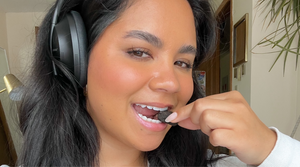Bioavailability – What The Heck Is It?
By Lauren Freedman, host of Uninvisible Pod
In its most basic form, the term “bioavailability” has everything to do with absorption. From medical literature to Dictionary.com, it’s a marker of how much – that is, how quickly, in what quantity, and overall in what quality – medications, foods, supplements, and treatments are absorbed into the body. It has wide-ranging ramifications, and it’s important to understand as we seek healthful approaches to our wellness regimens.
To begin, let’s distinguish between nutrient and vitamin bioavailability. Nutrient bioavailability – the ability of the body to absorb a particular food or supplement – has everything to do with the state of the body itself, and factors related to digestion, the general state of the intestines, and metabolic function. Vitamin bioavailability – the ability of ingredients in a particular vitamin or supplement to be absorbed – has everything to do with the ingredients themselves, and whether they work harmoniously together.
NUTRIENT BIOAVAILABILITY
If nutrient bioavailability is to be understood as the “proportion of a nutrient that is absorbed from the diet and used for normal body functions”, then we must first consider the body (1). Is it in balance, or is it lacking in certain vitamins and higher in others? According to the University of California at Berkeley, “After nutrients are digested, the amount absorbed and retained depends on your body’s needs, which are largely determined by your age, sex, health, and the level of nutrients already in your body” (2). UC Berkeley provides a very helpful example, as well. “A healthy man absorbs less than 1% of the iron in a balanced diet, but a woman with anemia will absorb as much as 35% of the iron in her diet” (2). If both are given the same dose, their nutrient bioavailability, therefore, varies.
One other important factor to understand is that not all nutrients are created equal. To quote again from UC Berkeley, “Many things influence how much of a given nutrient your body can use: its source, for one thing, as well as the other foods you eat at the meal and how the foods are processed and cooked. Vitamins and minerals interact in complex, often unpredictable ways.” (2) This is why we also need to understand the importance of co-nutrients (not only as they relate to food, but also as they relate to vitamins), which can act either as friend or foe when it comes to absorption. A common example many may be familiar with is that of calcium, which requires vitamin D to be properly absorbed by the body – or vitamin C, which can aid in the absorption of iron (2)(3). However, did you know that zinc and iron can counteract each other’s effects? (3)
VITAMIN BIOAVAILABILITY
If vitamin bioavailability has more to do with the particular ingredients of a supplement, we must consider the nutrients and co-nutrients discussed above (are the ingredients working together to aid in the body’s absorption?), and also how easily the body can break down said nutrients. “Under normal conditions, a food-based vitamin’s nutrients would be easier to absorb and assimilate than those of a synthetically made vitamin, absent any other digestive issues,” says Dr. Yariv Rothman DC, founder and owner of The Vitality Health Center in Santa Monica, CA. “Your body will have an easier time utilizing and assimilating a natural product.”
So: eating your vitamins will likely make them easier to absorb. This means that edible vitamins will, in theory, release more slowly, and more effectively distribute to their relevant channels beyond the digestive system. On a conceptual level, this also makes the idea of an edible vitamin more like a return to source – it simplifies the process of absorption for the body’s comfort.
Nutritionist Alyson Roux (MS, CNS, MFA) adds, “Preliminary research has shown that due to natural genetic variation, different people might be better suited to plant-based diets, or they might be more nourished by diets that include animal-sourced foods. For example, vitamin A needs to be converted into the active form in the body, this takes more steps when it is sourced from a plant source, but due to natural genetic diversity, some people's bodies convert certain vitamins into useable forms more or less efficiently than others. If one can't consume an adequately diverse diet for medical, cultural or ethical reasons, consuming vitamins in bioavailable forms might be a supportive fit.”
CONCLUSION
So what can we take away from all this information? If you can eat your vitamins – your body will thank you. Sure, our supplements aren’t universally available as edibles – not yet. But for now, if you need a multivitamin (if you’re looking to fill the gaps in the Standard American Diet with real food nutrients) and if you’ve consulted your doctor and gotten the A-OK on all the ingredients for your needs (be sure to always ask a medical professional and check for drug and supplement interactions), then GEM is made for you.
---------
Lauren Freedman is the founder and host of Uninvisible Pod, a weekly podcast about invisible and chronic conditions. New episodes are released every Wednesday, and you can subscribe wherever you listen to podcasts – including iTunes. You can also find the pod on Instagram, Facebook, and Twitter.
Sources:
1. https://www.eufic.org/en/food-today/article/nutrient-bioavailability-getting-the-most-out-of-food, from Aggett PJ (2010). Population reference intakes and micronutrient bioavailability: a European perspective. American Journal of Clinical Nutrition 91(suppl):1433S-1437S. doi:10.3945/ajcn.2010.28674C and Hurrell R & Egli I (2010). Iron bioavailability and dietary reference values. American Journal of Clinical Nutrition 91(5):1461S-1467S. doi: 10.3945/ajcn.2010.28674F
2. https://www.berkeleywellness.com/healthy-eating/nutrition/article/nutrients-they-are-team-players






